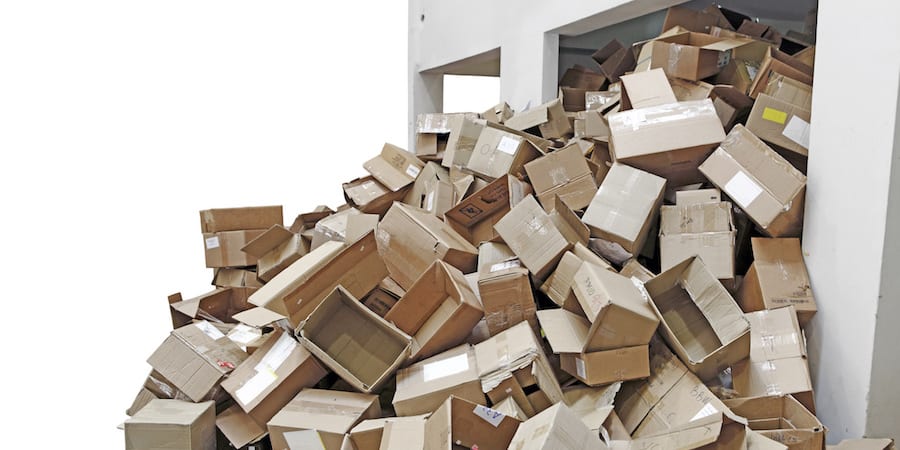
Eliminate complexity in raw and packaging materials
FEATURE – There is a form of waste – complexity in raw and packaging materials – that adds costs to manufacturing without creating value, but it is often overlooked. The author explains what it is and how to banish it.
Words: Ian Glenday, lean coach and author
Having understood that Toyota's initial steps towards levelling, or patterned production, consisted of a fixed schedule of products over six to eight cycles, we asked ourselves how to actually implement these fixed plans. Toyota did it with Pareto analysis or the 80/20 rule. They found that, typically, only 20% of the products accounted for 80% of the volume and therefore decided to put these first into the fixed cycles.
However, what I came to realize was that there were far more significant numbers – for instance, just 6% of the products usually account for 50% of the volume. It is far easier to start levelled production with 6%, rather than 20%, of the products. What also became apparent was that 50% of the products – just half – normally equal 95% of the volume and that the last 1% of the volume comes from a staggering 30% of the products made. With the help of my friend Carla Geddes, we developed these numbers into the Glenday Sieve, with colours for each category – green represents the 6%, yellow the 50%, and red the last 30% of the products.
But something was missing.
Experience in a number of different FMCG companies showed me that there was a category of non-value adding complexity and cost (waste, which is what lean strives to eliminate) that existed, but received very little attention. This form of waste is complexity in raw and packing materials that add no value to the consumer but add costs to manufacturing operations and to the supply chain. Sadly, this is not something that management normally focuses on in their lean initiatives.
To highlight these opportunities for waste elimination, Carla and I decided to add a category to the Glenday Sieve, which we called "the blues" – to remind people to make the most of these "blue opportunities" for eliminating waste.
There is no percentage or number associated with the blues in the Glenday Sieve, because they don't refer to product, but to the unnecessary complexity in the materials that will end up in the products.
The blues completed the Glenday Sieve.

WOULD YOU KNOW OF ANY "BLUE" EXAMPLES IN YOUR BUSINESS?
The list of blue opportunities is huge. Here are a few to illustrate the sort of things you might want to look for:
- Over 30 different grades of resin used in car paint formulations, when only five would work.
- Different pallet types for the same SKU for different customers. When asked, all customers agreed the same pallet would be fine.
- Different bottle shapes for different liquid products were harmonized to the same shape, but different colours for different products are still used. Consumers did not notice – and if they had, would they have cared? Number of changeovers could be reduced both at the supplier and on the bottling lines.
- Confectionery manufacturer making every product type for different European countries in both 30- and 40-count cases. No country took both case sizes of any product. They later agreed to move to one case size for all countries and as the case packer was the bottleneck on the production line, the changeover saving increased line efficiency and product margins.
- Date code in different position on pack of different products, meaning the date code machine had to be physically moved each time and re-set to hit the date code space on the pack, even though packs were of the same dimension.
When looking for blue opportunities, it is not always possible to show a clear saving for each proposal, but this doesn't mean that only proposals that can demonstrate savings should be approved. Removing unnecessary complexity that adds no value is an objective of lean thinking, and the cumulative effect of many small reductions in complexity will lead to a better company and a better supply chain – as well as happier and less-stressed out employees.
Unfortunately, the common argument that "the marketing department will never agree to that" often means that many potentially impactful blue opportunity suggestions are not made. I hope the following example shows that it is simply not true that marketing automatically rejects blue opportunities.
The first levelled production five-day rapid implementation workshop at Kimberly-Clark included a team looking for blue opportunities to pursue during the week. Several were identified, but there was one that showed by far the biggest potential – even though it was seen as impossible to achieve. Why? People believed that marketing would never agree to it. The factory we were working at produced KLEENEX® facial tissues, including bundle packs. These are two or more boxes bound together by shrink film.
At first the quantities required were quite low compared to overall volumes, so the bundling was performed as an off-line operation, using clear shrink film, as the cost of printed film would have been considerably higher. A new label detailing the product with its barcode was then attached to the outside of the bundle.
When the bundle proved to be a popular item with consumers, demand from retailers went up quickly and considerably. The off-line bundling proved to be too slow a process and it became clear that an in-line bundler and shrink-wrapper would be required. However, a problem had arisen with the current bundle pack at the checkout point in supermarkets: due to the shrink film wrap being clear, the barcode on one of the single boxes inside the pack was often scanned instead of the new one on the outside label. A bundle pack would therefore be sold for the price of a single box – which was of course great for the consumer, but not so great for the retailer.
A technical solution was developed: the "orientator" – a large machine, which was installed on the line, which turns packs around so that all the barcodes on the individual packs face the inside and are not visible any more. On normal production, the orientator would simply be bypassed so that it would not impact output efficiency. However, when making bundle packs (which continued to be popular with consumers) the machine became the bottleneck on the line, slowing down overall outputs and reducing efficiency.
The "new" blue opportunity was then to move to printed shrink film, which would cover the barcodes on the individual boxes and make them unreadable. Rapid implementation workshops are about making changes happen in one week: the team wanted to not only identify this blue opportunity, but to implement it as well. A seemingly impossible task was made all the harder when the team discovered that the Marketing VP, Gary Keider, who had to ratify every decision, was on holiday and that he had given strict instructions not to be disturbed. The team decided to phone him nonetheless.
Here is the email he sent to his marketing and sales team in response to the phone call he received:
Subject: Printed shrink film
Team,
As you may know, we have had some negative customer feedback regarding our bundle pack merchandising, specifically our ability to merchandise and brand on three sides of a bundle to enable pallet communication to be optimized. I recently sent out an email requesting that the organization look at ways to speed up getting to printed shrink film as one possible solution to the merchandising issue. Today I was informed that the operational leaders at the New Milford factory would like to move immediately to printed shrink film on all bundle codes and then quickly accomplish the same at all producing sites. They didn't have to ask me twice if that was OK, I jumped in with both feet and committed our team to doing whatever is needed to support this accelerated changeover. We will need to make this a major priority going forward; graphics and specifications can be a bottleneck, so we are looking to find creative ways to move faster.
Please note that I'm on vacation, but this was a big enough "breakthrough" that I opted to come off vacation for 15 minutes to type this note. Now it's back to 90 degrees, clear skies, pool, golf and several adult beverages.
Gary Keider
Clearly, he was thrilled with the idea – not only to move to printed shrink film, but to do so very quickly. Rather than creating obstacles to change, he showed he saw this as an issue that had to be solved fast, which Mr Keider asked his team to get done. (Even though his last comment left no room for interpretation - no more phone calls!)
The blue opportunity was agreed that week and implemented as soon as printed film became available. The orientator was removed from the line and output on the line increased by 22% during production of the bundle packs.
One must recognize that the retail environment is increasingly competitive, which puts pressure on organizations to continuously develop new product formulas, use new and technologically advanced materials, and to change the packaging frequently. There has been little focus, however, on understanding and eliminating the things that add cost for the consumer, without adding value. This is why you are likely to find many blue opportunities in your company, as well. Isn't it time you banished those source of waste? Doing so will both simplify your supply chain and increase your margins, without impacting customer value.
This article is also available in Polish here.
You can find out more about levelled production in Lean/RfS: putting the pieces together
THE AUTHOR

Ian Glenday is a lean coach and sensei with experience supporting change in several industries, including chemicals, food and drink, and pharmaceuticals. He started his lean journey in the late 1970s as a micro-biologist running a fermentation plant producing enzymes, where he first began developing Lean/RFS concepts and principles for application in process industries. He later joined Reckitt & Colman, later becoming Head of Policy Deployment based in Norwich, England where substantial increases in sales per employee, market share and profit margins were achieved by applying lean across the whole company. Ian is also author of two Shingo award winning books: Lean/RFS: putting the pieces together.
Read more


FEATURE – Moving her assistant's workstation next to hers and introducing standardized work helped a family physician in California to provide better, faster care to her patients and to avoid burnout.


INTERVIEW - In this interview, Lynne Smith discusses the potential and difficulties of applying Lean Thinking to NGOs and looks back at the lean transformation at the Gates Foundation.


ONE QUESTION, FIVE ANSWERS – Change might be scary but, when things do work out, it also brings us incredible pride and sense of accomplishment. We asked five practitioners to tell us what the most satisfying moment in their lean journey was.


ROUND-UP – Standardized work, which lies at the foundation of the TPS house, is a necessary component of a lean transformation. This article looks at the best content on this topic from our archives.

